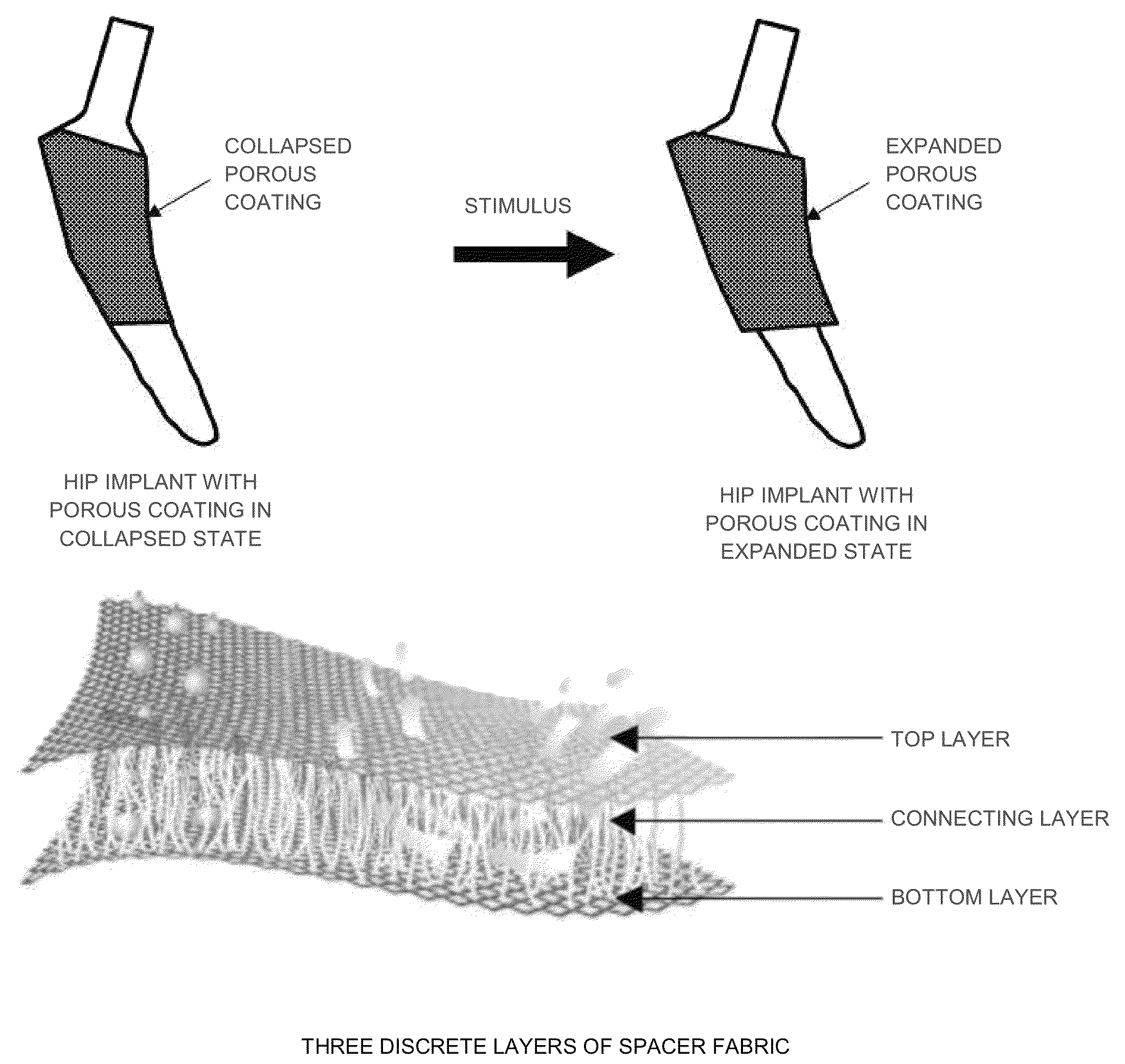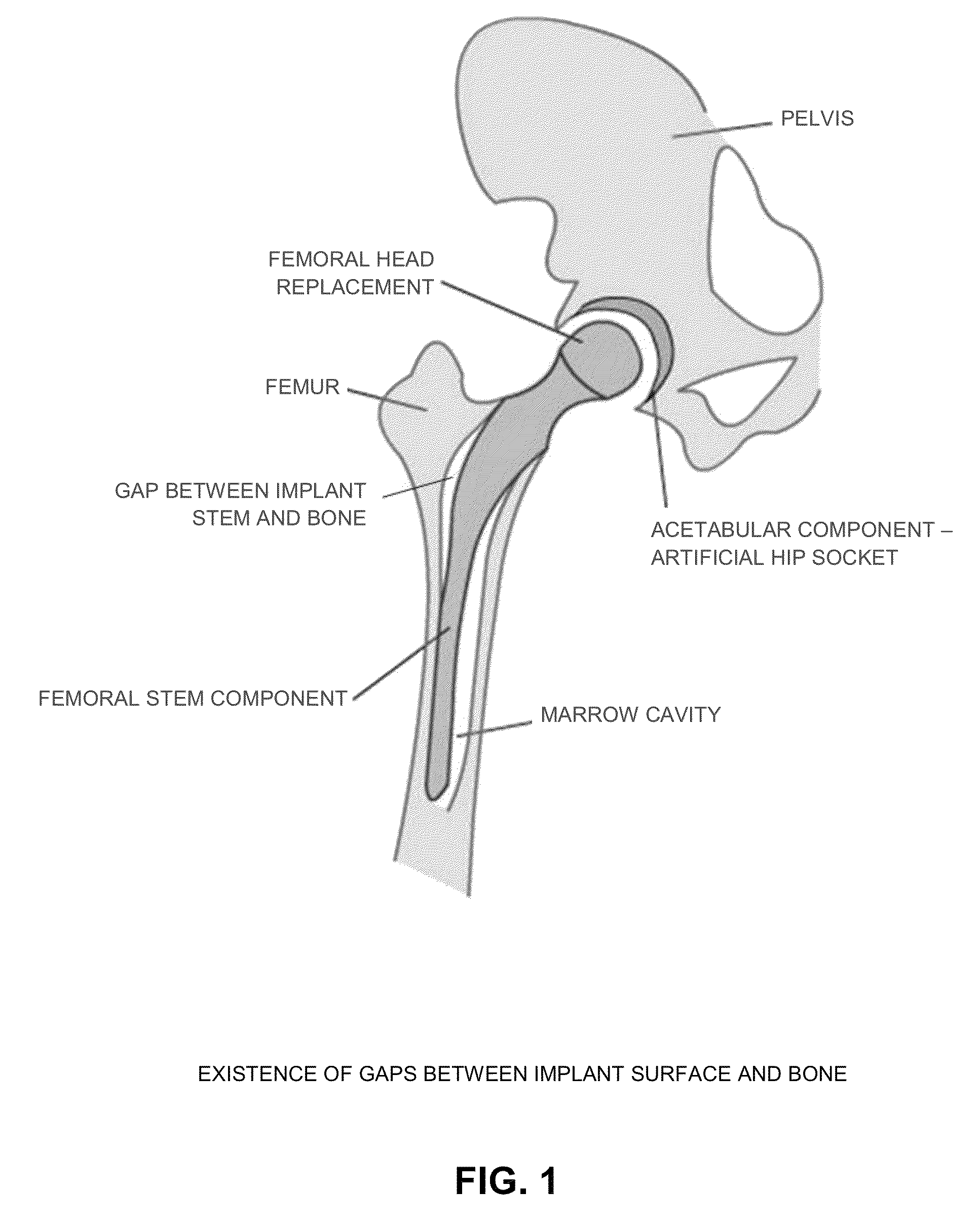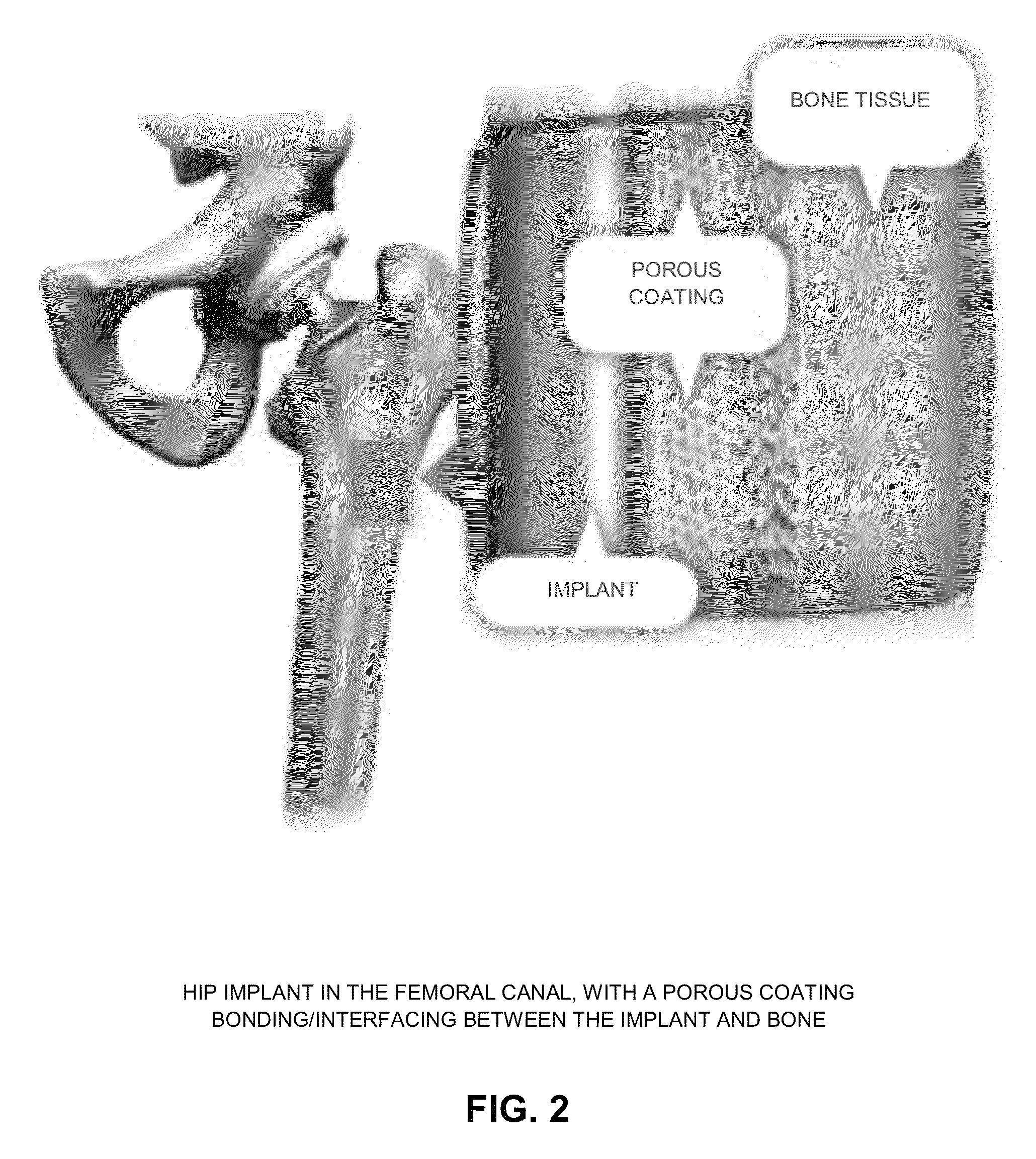Dynamic porous coating for orthopedic implant
a technology of orthopedic implants and porous coatings, applied in the field of medical devices and procedures, can solve the problems of poor implant fixation, unacceptably high revision rate, lack of tight fit between the implant and the surrounding bone, etc., to promote bone remodeling, improve fixation, and improve the effect of implant performan
- Summary
- Abstract
- Description
- Claims
- Application Information
AI Technical Summary
Benefits of technology
Problems solved by technology
Method used
Image
Examples
Embodiment Construction
[0066]As noted above, prior art porous coatings are static (i.e., rigid) structures, fixed in shape and geometry, which limits their ability to infiltrate the bone tissue. As such, bone tissue must infiltrate into the porous coating in order to achieve some level of osseointegration. With prior art porous coatings, initial osseointegration is limited to those regions where the porous coating is in direct contact with the bone surface. Initial osseointegration is not possible where a gap exists between the implant and the bone, which is frequently the case in practice.
[0067]In contrast, the present invention provides a porous coating which is dynamic in nature, preferably made out of shape memory materials (SMM), e.g., Nitinol (NiTi) per ASTM F2063, Ti-13Nb-13Zr per ASTM F1713, Ti-12Mo-6Zr-2Fe (TMZF) per ASTM F1813, etc. The dynamic porous coating of the present invention expands against, and applies strain against, the host bone so as to stimulate bone remodeling and expedite / enhanc...
PUM
| Property | Measurement | Unit |
|---|---|---|
| angle | aaaaa | aaaaa |
| angle | aaaaa | aaaaa |
| pore sizes | aaaaa | aaaaa |
Abstract
Description
Claims
Application Information
 Login to View More
Login to View More - R&D
- Intellectual Property
- Life Sciences
- Materials
- Tech Scout
- Unparalleled Data Quality
- Higher Quality Content
- 60% Fewer Hallucinations
Browse by: Latest US Patents, China's latest patents, Technical Efficacy Thesaurus, Application Domain, Technology Topic, Popular Technical Reports.
© 2025 PatSnap. All rights reserved.Legal|Privacy policy|Modern Slavery Act Transparency Statement|Sitemap|About US| Contact US: help@patsnap.com



